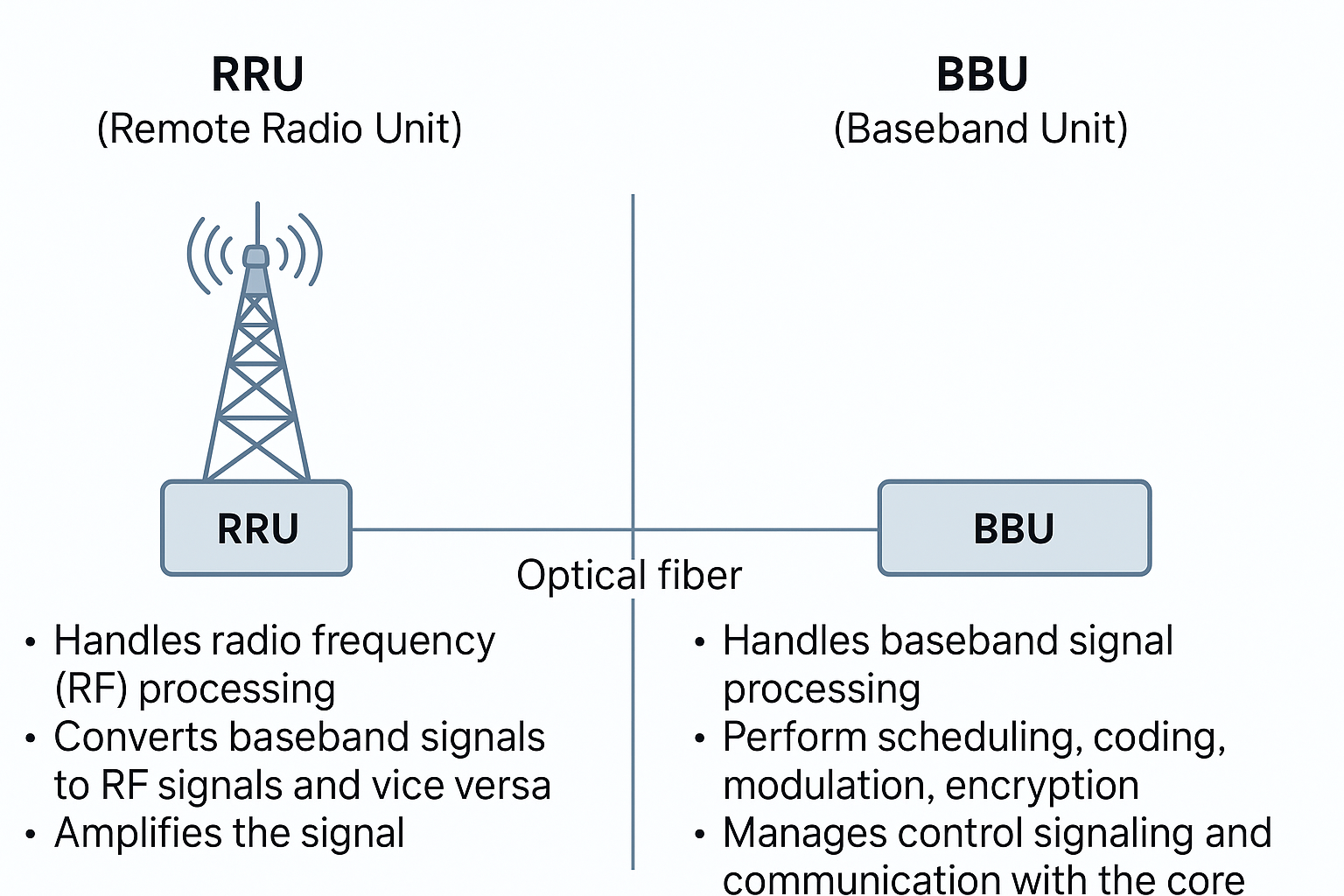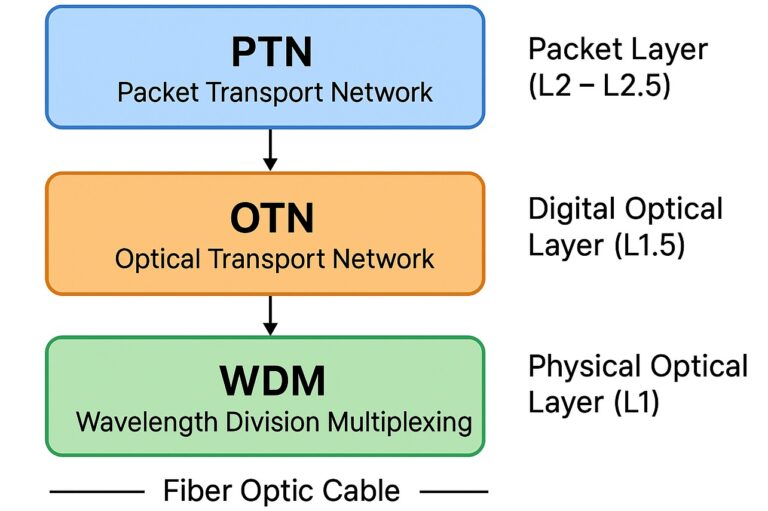Network Function Virtualization (NFV) is a technology that enables network operators to virtualize their network functions onto commodity hardware, such as servers, switches, and storage devices. The purpose of NFV is to create a more flexible, scalable, and cost-effective network infrastructure that can keep up with the demands of modern telecommunications.
Here are some basics of NFV in telecommunications:
- Virtualization of Network Functions: NFV involves the virtualization of network functions, which allows operators to run network services on standard hardware platforms, instead of dedicated hardware appliances. This makes it possible to deploy and manage network functions more efficiently, as well as reduce costs associated with hardware maintenance and upgrades.
- Service Agility: With NFV, network operators can deploy new services more quickly and easily, as they can simply spin up virtual instances of network functions on demand. This enables operators to respond more quickly to changing customer needs and market conditions.
- Scalability: NFV allows network operators to scale their network functions up or down as needed, without having to invest in expensive new hardware. This makes it easier for operators to meet fluctuations in demand, while also avoiding over-provisioning.
- Reduced Costs: NFV can help reduce the costs associated with network infrastructure, as it allows operators to use commodity hardware and reduce the number of physical devices needed to run network functions. This can lead to cost savings on hardware procurement, maintenance, and upgrades.
- Open Standards: NFV is based on open standards, which means that operators can choose from a wide range of hardware and software vendors when deploying network functions. This promotes vendor interoperability and prevents vendor lock-in.
Overall, NFV is an important technology for telecommunications operators, as it enables them to create a more agile, scalable, and cost-effective network infrastructure.
Most used VNF platforms in telecommunications
Virtualized Network Function (VNF) platforms are used extensively in telecommunications for deploying and managing network functions in a virtualized environment. A VNF platform is a software platform that provides the necessary resources, such as CPU, memory, and storage, for running virtualized network functions.
Here are some of the most commonly used VNF platforms in telecommunications:
- OpenStack: OpenStack is an open-source cloud computing platform that is widely used for deploying VNFs. It provides a wide range of services, such as compute, storage, and networking, that are essential for running virtualized network functions.
- VMware vCloud NFV: VMware vCloud NFV is a commercial VNF platform that is designed to provide a complete NFV infrastructure. It includes a wide range of services, such as compute, storage, and networking, as well as management and orchestration tools for deploying and managing VNFs.
- Huawei CloudMSE: Huawei CloudMSE is a VNF platform that is designed for telecom operators. It includes a range of services, such as computing, storage, and networking, as well as management and orchestration tools for deploying and managing VNFs.
- Red Hat OpenShift: Red Hat OpenShift is a container application platform that is used for deploying and managing VNFs. It provides a scalable and flexible platform for running virtualized network functions, with support for a wide range of applications and services.
- Nokia CloudBand: Nokia CloudBand is a VNF platform that provides a complete NFV infrastructure for telecom operators. It includes a range of services, such as computing, storage, and networking, as well as management and orchestration tools for deploying and managing VNFs.
Overall, VNF platforms are essential for telecommunications operators that are looking to deploy and manage virtualized network functions in a scalable and cost-effective manner. The choice of VNF platform will depend on factors such as the specific requirements of the operator, the size of the network, and the types of network functions that need to be deployed.
Main features of NFV
The main features of Network Function Virtualization (NFV) in telecommunications include:
- Virtualization of Network Functions: NFV enables the virtualization of network functions, such as firewalls, load balancers, and routers. This allows network operators to deploy and manage these functions as software instances running on standard hardware, rather than dedicated hardware appliances.
- Service Agility: NFV enables service agility by allowing network operators to quickly and easily deploy new network functions and services in response to changing customer needs or market conditions. This is made possible by the ability to spin up virtual instances of network functions on demand.
- Scalability: NFV enables network operators to scale network functions up or down as needed, without having to invest in expensive new hardware. This is particularly important in today’s telecommunications landscape, where there is a constant demand for new services and increasing amounts of data traffic.
- Multi-Tenancy: NFV supports multi-tenancy, which enables multiple customers or service providers to share a common network infrastructure. This allows for greater efficiency and cost savings, as resources can be shared across multiple tenants.
- Automation: NFV enables automation of network functions, which can help reduce operational costs and improve efficiency. This includes automating tasks such as service provisioning, network configuration, and scaling of resources.
- Network Function Management: NFV provides tools for managing network functions, including monitoring, orchestration, and service assurance. This makes it easier for network operators to manage complex networks and ensure that services are delivered reliably and efficiently.
- Vendor Interoperability: NFV is based on open standards, which enables interoperability between different vendors‘ hardware and software. This promotes competition and innovation, while also reducing the risk of vendor lock-in.
5 Virtualization of Network Functions in IT
Here are 5 examples of network functions that can be virtualized using Network Function Virtualization (NFV):
- Firewall: Firewalls are essential for securing networks by monitoring and controlling network traffic. With NFV, firewalls can be virtualized and run as software instances on standard hardware, providing greater flexibility and scalability.
- Load Balancer: Load balancers distribute network traffic across multiple servers to ensure that no single server is overwhelmed. With NFV, load balancers can be virtualized and run as software instances, making it easier to scale up or down based on demand.
- WAN Optimization: WAN optimization functions, such as data compression and caching, can be virtualized using NFV. This can help reduce the amount of data that needs to be transmitted across a wide area network, improving performance and reducing costs.
- Routing: Routing is the process of directing network traffic between different networks or devices. With NFV, routing functions can be virtualized and run as software instances on standard hardware, providing greater flexibility and scalability.
- Media Gateway: Media gateways enable the conversion of voice and multimedia traffic between different networks and devices. With NFV, media gateway functions can be virtualized and run as software instances, providing greater flexibility and scalability for telecommunications operators.
5 Virtualization of Network Functions in Telecommunications
Here are 5 examples of network functions that are commonly virtualized in telecommunications using Network Function Virtualization (NFV):
- Session Border Controller (SBC): SBCs are used to secure and manage multimedia sessions between different networks, such as between an enterprise network and a service provider’s network. With NFV, SBCs can be virtualized and run as software instances on standard hardware, providing greater flexibility and scalability.
- Diameter Routing Agent (DRA): DRA is used in LTE networks to manage and route Diameter signaling messages between different network elements. With NFV, DRAs can be virtualized and run as software instances, providing greater flexibility and scalability for LTE network operators.
- Mobile Packet Core: The mobile packet core is a set of network functions that are essential for delivering mobile data services, such as the Serving Gateway (SGW) and the Packet Data Network Gateway (PGW). With NFV, these network functions can be virtualized and run as software instances, providing greater flexibility and scalability for mobile network operators.
- Network Address Translation (NAT): NAT is used to translate private IP addresses into public IP addresses, allowing devices on a private network to communicate with devices on the public Internet. With NFV, NAT functions can be virtualized and run as software instances, providing greater flexibility and scalability for service providers.
- Content Delivery Network (CDN): CDN is used to distribute and deliver content, such as video or software updates, to end users more efficiently. With NFV, CDN functions can be virtualized and run as software instances, providing greater flexibility and scalability for service providers and content providers.
5 examples of Multi-Tenancy in telecommunications
Here are 5 examples of multi-tenancy in telecommunications:
- Virtual Private Networks (VPN): VPNs allow multiple tenants, such as enterprises or departments within an enterprise, to securely connect to a service provider’s network and communicate with each other. Each tenant’s traffic is segregated and encrypted to ensure privacy.
- Cloud Computing: Cloud computing enables multiple tenants to share computing resources, such as servers, storage, and applications, in a flexible and scalable manner. Tenants can access the resources they need on-demand and only pay for what they use.
- Infrastructure as a Service (IaaS): IaaS providers offer virtualized computing resources, such as servers and storage, that multiple tenants can use to build their own applications or services. Each tenant’s resources are isolated from other tenants, ensuring security and privacy.
- Software as a Service (SaaS): SaaS providers offer software applications that can be accessed over the Internet by multiple tenants. Each tenant’s data and configuration settings are segregated, ensuring privacy and security.
- Network Function Virtualization (NFV): NFV enables service providers to virtualize network functions, such as firewalls or load balancers, and offer them as services to multiple tenants. Each tenant’s traffic is segregated and managed separately, ensuring privacy and security.
Overall, multi-tenancy enables service providers to offer shared resources and services to multiple tenants in a secure and cost-effective manner. By leveraging economies of scale, service providers can reduce costs and offer more flexible and scalable services to their customers.
5 examples of Automation in NFV Telecommunications
Here are 5 examples of automation on NFV for telecommunications:
- Orchestration: NFV orchestration automates the deployment and management of virtual network functions (VNFs) across the network. It provides a centralized management system for configuring and deploying VNFs, simplifying the management of complex network services.
- Service Assurance: Automation can be used to monitor and manage the performance of virtualized network functions. Service assurance systems can automatically detect and resolve performance issues, ensuring that services remain available and perform optimally.
- Scaling: Automation can be used to scale VNFs up or down in response to changing traffic demands. Scaling can be triggered automatically based on predefined thresholds, ensuring that network resources are always optimized for current demand.
- Self-Healing: Automation can be used to detect and automatically resolve faults within the network. Self-healing systems can automatically reconfigure or restart VNFs that are experiencing issues, minimizing downtime and ensuring high availability.
- Security: Automation can be used to automate security policies and response. Automated security policies can detect and respond to potential threats, while automated response can reduce the time required to mitigate an attack.
10 NFV hardware features
Here are 10 NFV hardware features:
- CPU Pinning: This is a technique that ensures a particular virtual CPU is bound to a specific physical CPU core, improving the performance and efficiency of virtualized workloads.
- SR-IOV: Single Root Input/Output Virtualization (SR-IOV) is a hardware feature that enables the efficient sharing of a physical network adapter across multiple virtual machines. This improves performance and reduces latency.
- NUMA: Non-Uniform Memory Access (NUMA) is a hardware feature that optimizes memory access in multi-processor systems, improving performance and reducing latency.
- PCI Pass-Through: This feature allows a virtual machine to directly access a physical PCI device, such as a network adapter or storage controller. This improves performance and reduces overhead.
- DPDK: Data Plane Development Kit (DPDK) is a set of libraries and drivers that enable fast packet processing in virtualized environments. This improves performance and reduces latency.
- SmartNICs: Smart Network Interface Cards (SmartNICs) are specialized network adapters that offload networking functions from the CPU, improving performance and reducing latency.
- GPU Virtualization: Graphics Processing Unit (GPU) virtualization enables virtual machines to directly access the physical GPU, improving performance and enabling new use cases such as virtualized graphics workstations.
- Storage Virtualization: Storage virtualization enables multiple virtual machines to share a common storage pool, improving efficiency and reducing storage costs.
- Memory Compression: Memory compression is a technique that compresses memory contents in real-time to improve memory efficiency and reduce memory usage.
- Energy Efficiency: Hardware features such as dynamic voltage and frequency scaling and power management can improve energy efficiency and reduce power consumption in virtualized environments.
Overall, these hardware features enable service providers to optimize the performance and efficiency of virtualized workloads, improve reliability, and reduce costs. By leveraging these features, service providers can ensure that their NFV infrastructure can support the demands of modern telecommunications services.


